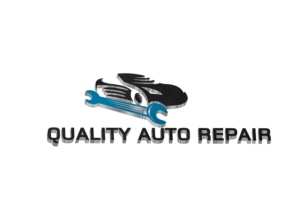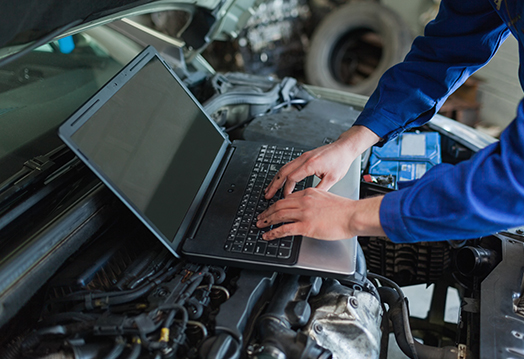What is a Check Engine Light?
A Check Engine Light will usually come on while driving when a fault occurs in the car’s fuel system and it can be a sign of potential engine problems, such as a faulty oxygen sensor, which is a critical component to keeping your engine performing at its best. If your car’s check engine light is on or just came on while driving it is recommended that you take it in for service as soon as possible.
As the owner of a car, you might have the sense that a check engine light just means a little maintenance is due. While that may be true, there are actually several common and serious causes of a check engine light. It is always better being safe than being sorry down the road in the event of the engine not performing at its best and causing internal damage to your vehicles vital components.
What does a Check Engine Light mean?
When something is not operating properly, the check engine light signals the need for attention. Engine light alerts vary from carmaker to carmaker. In cases of an OBD-II diagnostic system, the alert is also orange, yellow or red and is shaped like a car’s engine. Sometimes it says “check engine” with this alert.
There are two types of warnings.
- If the check engine light appears and stays on steadily, it could be a wide range of causes. In these cases, experts say, you should pull over at a safe location, shut off the engine and have your car towed to a repair shop for diagnosis.
- The check engine light on your car may be flashing or constantly lit. When this occurs, it’s best to pull over and have the car towed so a auto repair garage so the technician can determine the sources of the problem in your vehicle.
Some people confuse the service light with the check engine light, but the service light, sometimes in the shape of a wrench or the words “service now” or “service soon,” is telling you that it’s time for regularly scheduled maintenance, not something mechanically wrong.
Some of the most common reasons why your check engine light might be on
Now, let’s explore some of the most common reasons why your check engine light might be on with you.
1. Engine Problems
It goes without saying that the engine needs to run properly or the check engine light might turn on. Meaning all sensors, the control module monitors engine operation through a number of sensors. When it detects something wrong, it signals the check engine light to turn on.
2. Transmission problems
If the car’s transmission detects a problem, the check engine light will turn on. If the control module detects a problem with the transmission, it will turn on the check engine light to notify drivers.
3. Emissions equipment problems
Modern cars have stringent emissions equipment on board. There is the exhaust gas recirculation system, the catalytic converter, and so on. Each piece of the puzzle is designed to minimize tailpipe emissions, thereby protecting the environment and making the world a safer place.
Because there are so many different parts, we won’t list them one by one. Don’t worry though, a failure of any part can quickly turn the check engine light on.
4. Modules and sensors (electronic powertrain controls) problems
Issues with the sensors and modules, combined with the powertrain’s many wiring systems, can trigger check engine light.
5. Air/fuel delivery problems
An engine needs both air and fuel to work properly. When an engine gets too much or too little of either one, the proper control module will theoretically notice. The module will then activate the check engine light to warn the driver of impending problems.
6. Ignition system problems
The ignition system includes the spark plugs and everything else needed to ignite the air/fuel mixture inside the engine. As you probably guessed, the control module monitors ignition system operation. And it will turn on the check engine light if it detects a problem.
How to fix a Check Engine Light
The check engine light is a sign of a major problem with your car. That’s why it’s important to know what the light means, and how to fix it.
A Check Engine Light is a symbol on your car that appears in the dashboard when you have a problem with your engine. It tells you what your car’s problems are. For example, the light will show a check engine light when your engine has low oil pressure or a clogged fuel line.
The light will also show a Check Engine Light when you have a fuel leak, a clogged cooling system or a water pump that isn’t working.
The main purpose of the light is to warn you of serious engine problems. By having a light on the dashboard, you can take the necessary steps to repair those problems.
Can A Check Engine Light Be Dangerous?
If your car’s Check Engine Light comes on, it means your car is having some sort of malfunction. A malfunction could be anything from a broken fuel injector to a leaking hose. Whatever the reason, it may be a safety issue if left unchecked. So, a Check Engine Light could be dangerous if your car is not fixed and you get stranded somewhere. Pay close attention to your vehicle’s performance. If you hear strange sounds, it might be something that prevents the car from giving you 100 percent of its capability, making it safer and smoother for your vehicle on the road.
When the check engine light comes on, your car’s computer stores a corresponding diagnostic trouble code (DTC) in its memory. A mechanic or scanner can connect to your vehicle’s On-Board Diagnostic port and retrieve this diagnostic code.
Some problems get complicated and your mechanic needs to know more information before he can fix them.
As an example, P0300 is a diagnostic code which might indicate trouble with your engine. In most cases it does not give you any insight into what is wrong with the engine or where to start investigating for the problem.
Once you’ve identified and repaired the problem, the engine light should turn off automatically. If it doesn’t or if it comes back on later, there may be additional issues that need to be fixed.
How to Repair a Check Engine Light
It’s important to read the check engine light code if you have a car that suggests there may be an issue with the engine. Sensors in an engine will provide information on what could be wrong and this can be read through OBD II scanners or readers. Usually, these are connected to the connection used for the steering wheel; it’s called the OBD port.
To read the code you have three options:
1. Make an arrangement with a mechanic (pay the fee) in most cases the auto mechanic will waive the fees if you get the vehicle repaired at the shop.
2. “Bring your car to an auto parts store and ask for a code read for free, which often results in no charge. If the code is insignificant, you might even be able to fix it yourself.”
3. Pay $15 for a handheld scanner that you can easily carry, read in the car to see what needs attention, and then have the mechanic do. This is a great option if you have an older car that—sometimes shows a check engine light for minor problems. Scanners generally cost less than $15, and some will wirelessly send their information to your mobile phone.
Hire a professional to get your engine’s electrical system scanned if you’re not comfortable doing it on your own.
If you hear a buzzing sound from your car, there may be a problem with the engine. However, it is important to know how to fix the mistake on the road rather than being stuck in the middle of nowhere without any knowledge on what is happening. You can visit our website and see if your vehicle has a list of necessary services and contact specialists who will assist. By starting to fix it yourself on the road, it may save you a lot of stress and get you back home quickly!
Conclusion
The Check Engine light is a safety feature that alerts you of engine problems and is a part of the Clean Air Act. When the check engine light comes on it usually means there is something wrong with the engine. The lights are typically related to one another but can differ in what the cause for.
However, a check engine light is sometimes a sign of other issues, so always take it to an expert. A mechanic or other experienced mechanics can often solve all types of Check Engine Lights. It might also mean you need a brand-new engine, new parts or rebuild the whole car.
A Check Engine light is a notification that your car’s engine warn signal has been triggered and a mechanic needs to inspect the car.


Recent Comments